Hydrangea in Siberia: varieties, planting and care
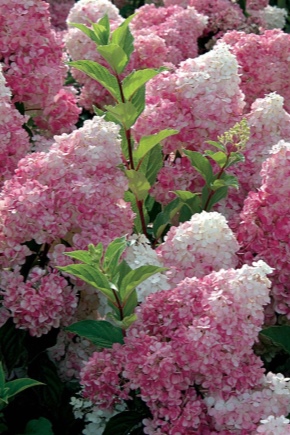
Every gardener dreams of a luxurious hydrangea. Hydrangeas are lushly flowering shrubs that enchant everyone who walks by with their beauty. Despite the fact that this plant is classified as southern, it is often grown in the vastness of Siberia. Very often as an indoor flower, but there are also adapted varieties that can survive the harsh climatic conditions, the main thing is to know how to plant a hydrangea correctly and take care of it in the future so that it does not freeze out. Let's learn in more detail about winter-hardy varieties of hydrangea, get acquainted with the nuances of their planting and subsequent care, and also consider beautiful examples of the use of a plant in landscape design.

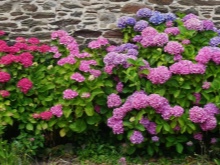
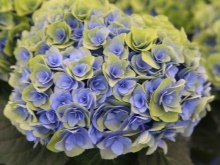
Suitable species
Cold Siberian conditions can only be tolerated by some types of hydrangea, namely paniculate and tree-like. When choosing the right variety, it is very important to pay attention to its characteristics, especially you should take a closer look at the height of the bush, pay attention to the size of its inflorescences, as well as the flowering period. For the northern regions, it is recommended to purchase early flowering varieties of hydrangeas, since admiring the beauty of late flowering simply will not work as a result of the onset of too early cold weather.
Panicle hydrangeas have rather large inflorescences, resembling a cone in shape. It depends on the correct choice of the required variety whether you can admire the flowering of a lush hydrangea or not.
Today there are about thirty species of hydrangeas, most of which are simply unable to withstand severe frosts, which is why young plants should be purchased only from trusted gardeners.

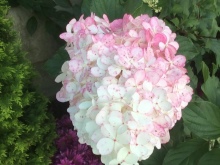
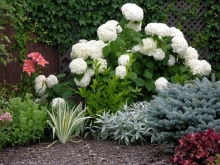
Popular varieties
Today, there are both tall, winter-hardy hydrangeas and undersized representatives of this plant. Both varieties can grow in Siberia, but it all depends on the variety. Consider the varieties of panicle hydrangea most popular for Siberia and their description.
- Pink Diamond. In translation it means "pink diamond". Indeed, this variety is so beautiful that it deserves just such a name. Pink Diamond hydrangea bushes can reach two meters, they perfectly keep their shape in various weather conditions, can easily survive strong gusts of wind. At the beginning of flowering, the flowers are white, then they gradually turn pink, and by the beginning of autumn they become almost red. The leaves have a deep green matte shade, slightly rough to the touch. This variety lives for about 25-30 years, it is easy to care for it, which is why it is loved not only by experienced gardeners, but also by beginners. This plant does not branch much, and therefore practically does not need pruning and scrupulous care.

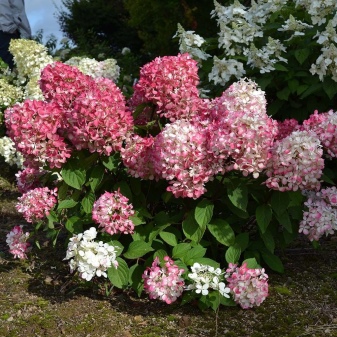
- Vanille Fraise. This variety is one of the brightest representatives of the panicle hydrangea that can survive in cold conditions. It looks really luxurious. Vanille Fraise inflorescences can be up to 30 centimeters long. At the beginning of flowering, the petals are white, a little later they begin to turn pink smoothly, and at the end of flowering they acquire a rich crimson hue. As a result, the lush bush has the color of the so-called strawberry with cream. In landscape design, it looks really amazing. This variety can easily overwinter temperatures down to -30 degrees.It requires special care, because if you start a bush, a lot of damaged branches will form on it.
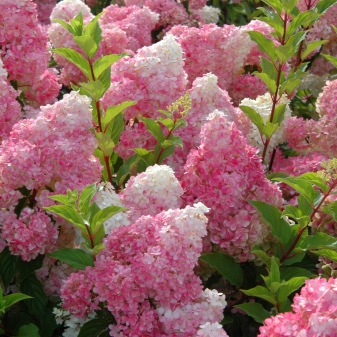

- Silver Dollar. The perennial flowering hydrangea of this variety will be especially fond of those who prefer lush inflorescences and spreading branches, which are very strong in this variety. Panicles with snow-white flowers are cone-shaped; by autumn they can gain a slightly pink hue. Inflorescences reach 25-30 cm. Leaves are bright emerald color with jagged edges. The winter hardiness of this variety is decent, Silver Dollar calmly tolerates temperatures of -25 degrees. For harsher climates, it is recommended to properly cover it.
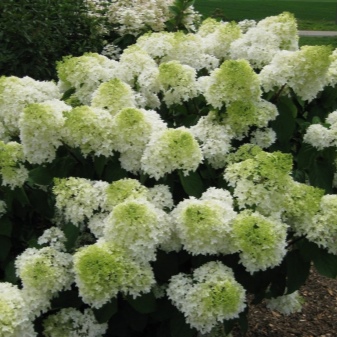
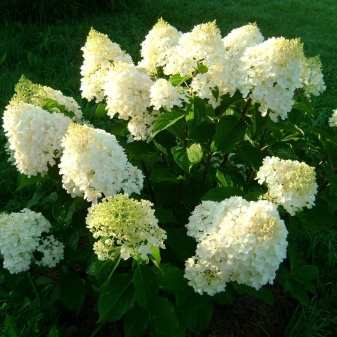
Pinky Winky is also a frost-resistant panicle hydrangea. This variety is a profuse flowering deciduous shrub. At first, the flowers are white, then they turn pink, have an elongated shape. "Pinky Winky" can withstand temperatures from -25 to -30 degrees, and the older the bush becomes, the more its frost resistance increases.
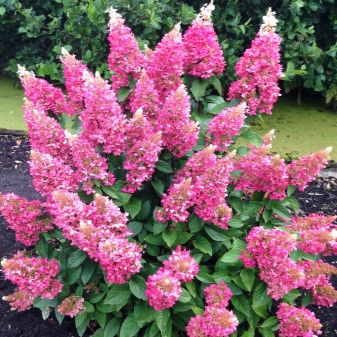
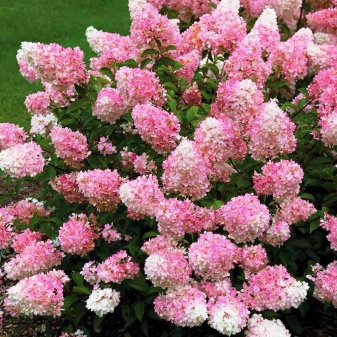
Treelike hydrangeas are also grown in Siberian conditions, usually they are 2 or 3-meter shrubs with rather strong shoots, with large inflorescences concentrated on them. Some of the most popular varieties are the following.
- Annabelle. "Annabelle" is a variety of densely growing tree-like hydrangea with dark green leaves and large white inflorescences-balls (at the beginning of flowering may have a pale green tint). This variety grows very quickly, on average up to 20 cm per year. "Annabelle" is one of the most frost-resistant varieties, since it can withstand temperatures down to -40 degrees.
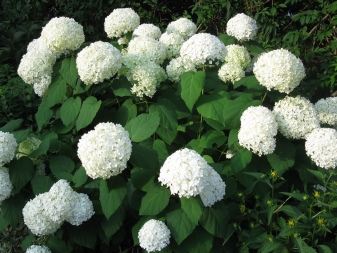
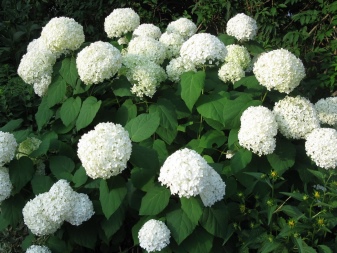
- Strong Annabelle. It has very large inflorescences of white-green color, and sometimes white-blue, depending on the soil, since this plant is able to absorb aluminum from it, which just affects the color in the future. This variety needs mandatory pruning, it grows no more than 1.5 meters in height. Sometimes hydrangea inflorescences are so large that it is difficult to see the presence of green leaves behind them.
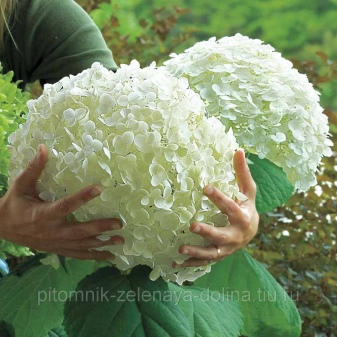
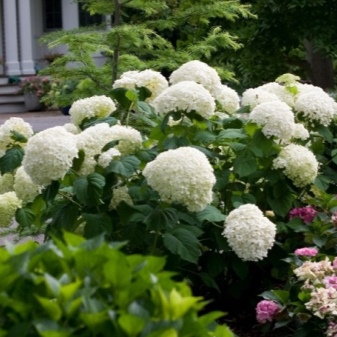
- Pink Annabelle Invincibelle. This variety is considered very resistant not only to frost, but also to any possible diseases, grows no higher than one and a half meters, has pale pink large inflorescences. Looks great in woody and shrub compositions in the garden.
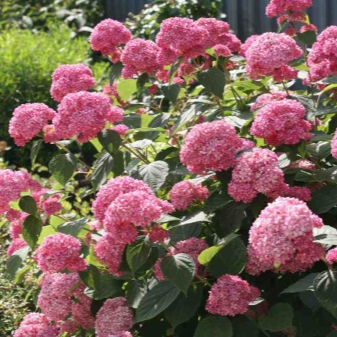
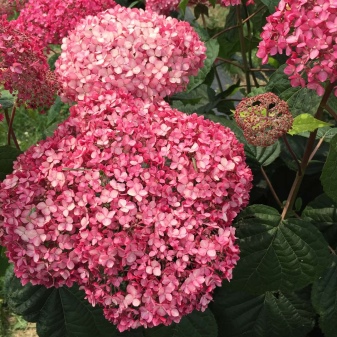
Also, the presented varieties can be planted not only in open ground, but also in a pot, where they grow well. Some gardeners often dig up young hydrangeas of these varieties for the winter, planting them in containers. But, of course, this cannot be done with large bushes, it is too time consuming. It is best to immediately plant the tree hydrangea in a large container.
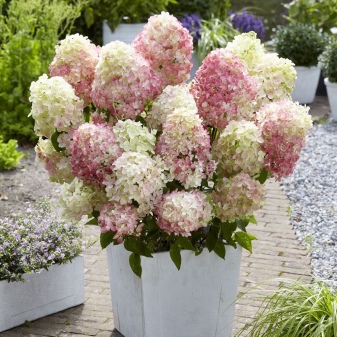
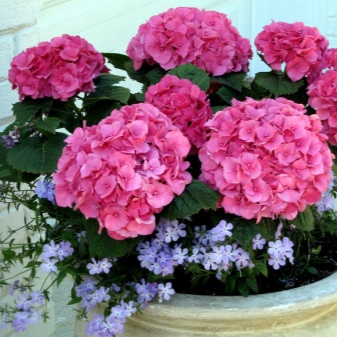
Of course, these are far from all varieties of frost-resistant hydrangeas, however, these are the most popular and proven ones, which will certainly be able to survive the severe Siberian frosts.
Landing rules
Before planting a seedling in the ground, it must be chosen correctly, and also take into account some other important points.
- It is very important to purchase good quality seedlings, they must be healthy, without the presence of any disease factors. Seedlings of 4-5 years of age take root best of all.
- Hydrangea is considered a moisture-loving plant, and therefore, when buying a seedling, it is very important to pay attention to the root system, which must be well developed and moist, otherwise the plant simply will not take root in the open field.
- Before planting, you need to choose the right place where the hydrangea will grow. It is best to pay attention to open areas without drafts. Despite the fact that winter-hardy varieties are not afraid of winds, it is best to minimize their effect on plants. Most often, hydrangeas are planted along fences, but at the same time, such a place should be well lit.In terms of soil, preference should be given to slightly acidic or moderately acidic, but alkaline soil is best avoided, in which hydrangea can begin to hurt. According to the recommendations of experts, sand, peat and turf soil must be present in the soil. If something is missing, then you can use fertilizing and fertilization in the future.
- As for the time and timing of planting, in Siberia it is best to plant a hydrangea in the spring after the frost has receded. This time is considered the most comfortable time for plants to take root in the open field.
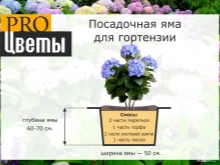
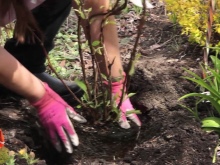
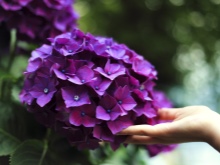
So, after choosing a plant and a place for planting it, it is necessary to begin the process of preparation itself and directly planting a hydrangea.
- For small seedlings, holes of 50 to 50 are quite suitable, for large ones a little more: 70 to 70 or 80 to 80, to a depth of no more than 60 cm.If several seedlings are planted at once, then the distance between them should be at least 2.5 meters.
- Before planting, the dug holes should be moistened; on average, this requires 2-3 buckets of water. After the water is absorbed, a mixture of fertilizers and dressings must be placed in the hole. Usually, for this, the soil is mixed with sand, peat and humus. If the soil needs to be acidified, you can add a mixture of spruce or pine needles.
- Before planting, all excess shoots from the hydrangea seedling should be removed, and the roots should be slightly shortened. The main thing is not to overdo it.
- It is very important to place the seedling correctly in a pre-prepared hole. Its root collar should be flush with the ground. After covering the roots, the plant must be watered again.
- To retain moisture, you can mulch the soil around the trunk of the plant, sprinkling it with a mixture of peat and needles, you can also use dry leaves.

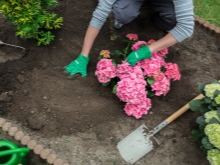
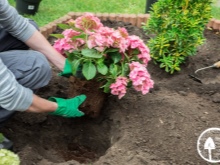
Follow-up care
After planting hydrangeas, they should be properly looked after, otherwise they will not live the time allotted to them. Growing a plant in itself is not the most laborious, and many varieties are so hardy that with proper care they can live for more than 30 years.
- Watering. Watering the plants is extremely important. The soil should always be moist, but it is not worth overfilling. After each watering in harsh conditions, it is recommended to sprinkle the soil with dry leaves or sawdust. Mulching is extremely beneficial for garden hydrangeas, because it allows you to retain moisture in the soil without forming crusts on it. It is best to use water for irrigation at room temperature; many experts even recommend that it be defended for several days. Sometimes you can add a little manganese to the water, which is used for prophylactic purposes against a number of diseases, but you should not be overzealous here either.
- Top dressing. In order for the bush to be strong and hardy, and its growth even more accelerated, it is recommended to feed it. Top dressing also has a good effect on abundant flowering. Hydrangeas should be fed with special fertilizers no more than 4-5 times per season. From organic matter, manure fertilizers or nitrogen compounds can be used; mineral fertilizing is also recommended. You can feed the plant when the cold weather recedes, then when it picks up buds, during flowering and, finally, after dropping the leaves.
- Pruning. You should only cut hydrangeas as needed, you should not get carried away, because the plant can suffer greatly from this. In the fall, dry branches with foliage are usually pruned, but in the spring it is recommended to do a more thorough pruning. Branches can be shortened up to five buds, in rare cases and more if necessary. On panicle hydrangeas, shoots are removed to the third bud, while it is undesirable to cut the main ones.
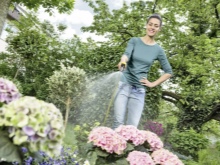
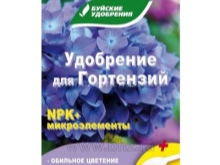
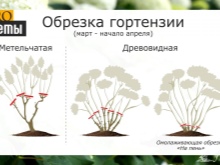
Preparing for winter
In order for the hydrangea to bloom again next season, in addition to pruning it, it is extremely important to properly cover it for the winter. There is nothing difficult in this, the main thing is to have time before the first frost so that the plant does not suffer.
It is recommended to cover the hydrangea with dry foliage or spruce branches, it is also advisable to sprinkle the bush with peat (about 15–20 cm), and from above it should be covered with a soft material, strengthening it, for example, with stones or something heavy. The hydrangea is fully disclosed only after the frost has receded.
Also, as a shelter, you can make a frame for a plant, which should be covered with a film - this type of shelter is ideal if strong winds always blow in the place where the plant grows. In this case, the roots can be covered with manure or spruce branches. In the winter season, the bush perfectly insulates the snow.

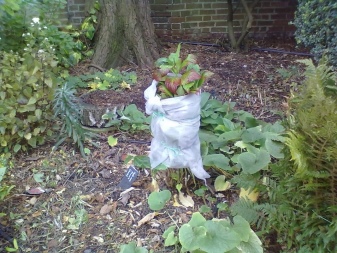
Disease and pest control
Like any other plant, the hydrangea bush can be attacked by diseases and pests, especially annoying insects attack flowers.
If yellow spots are seen on green leaves, then, most likely, a spider mite attacked the hydrangea. Often, the plant is ill externally, but there are no signs of the presence of insects or pests, in which case experts suspect nematodes, that is, worms that parasitize in the root system of the plant. Below we will take a closer look at the main diseases that affect hydrangeas growing in Siberian conditions.
- White rot. Quite a well-known fungal disease, which is not so easy to get rid of. The fungus affects the hydrangea, namely its roots, as a result of which it does not receive nutrients, as a result, the plant begins to die and dry before our eyes. With this disease, the shoots of hydrangea begin to acquire a dark color, and then become covered with a pronounced white bloom. They fight this disease with the help of special products sold in gardening stores.

- Gray rot. This disease spreads very quickly in high humidity. Both the stems and leaves begin to darken, becoming covered with spots, after which holes begin to be seen in their places. For the treatment of hydrangea, it is necessary to remove all affected branches and leaves, as well as treat it with chemical or biological substances from gray rot. From folk remedies, a solution of soda is often used. It is believed that the causative agent of this disease, even after several years, remains in the soil, and therefore, after the main methods of treatment, it is recommended to do prophylaxis in subsequent years so that the plant does not get sick again.

- Chlorosis. This disease occurs if the plant has a lack of iron. The leaves of the hydrangeas begin to turn yellow in spots, and the shrub itself begins to slowly fade. To avoid this ailment, it is recommended to water the plant with settled water and preferably not tap water. For prevention, fertilizers with a high iron content should be used.
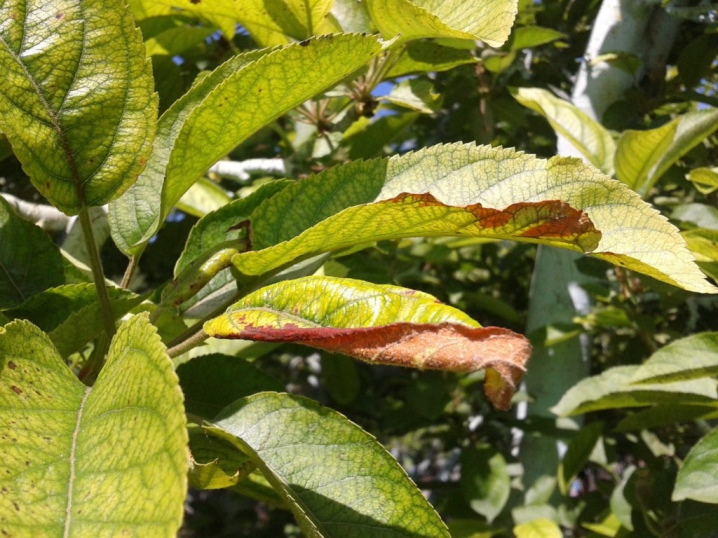
If brown spots with a white center are seen on the leaves, then this may be a disease called septoria. As a rule, it is treated with difficulty with the help of special preparations, and plants suffering from this ailment winter extremely badly.
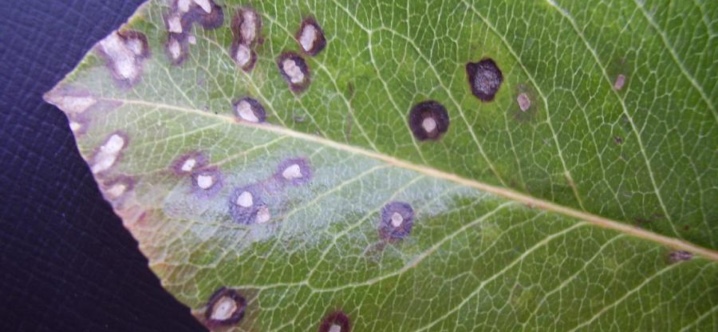
Of course, this is not a complete list of diseases that the plant is susceptible to. The hydrangea is often attacked by aphids, caterpillars, snails and many other insects, which are easy to remove with the help of special insecticides. To prevent the plant from dying, it should be treated on time, but the best treatment is still prevention.
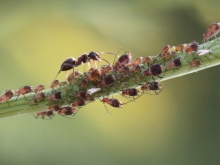
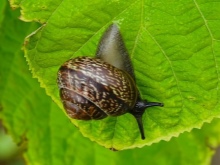
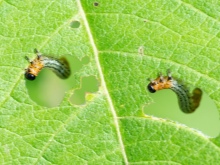
As a preventive measure, you can use various fertilizers, as well as herbal infusions, there are also a lot of recipes for preparing solutions from soda, laundry soap and manganese, which can be sprayed on plants not only during the flowering period, but also immediately after wintering.
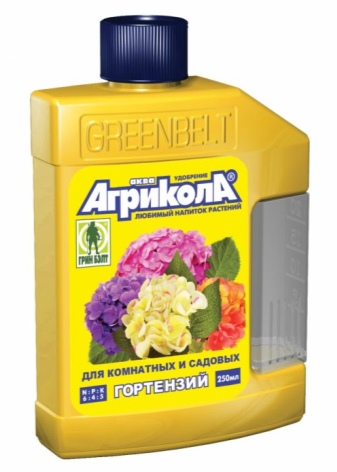
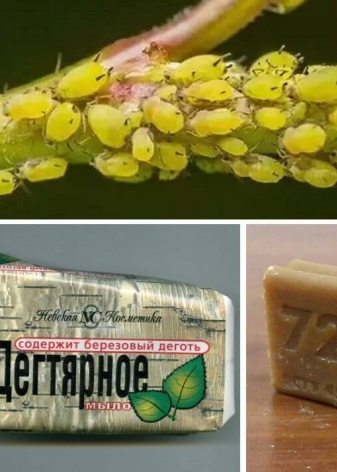
Reproduction
Hydrangea can be propagated in different ways, however, the most common are:
- cuttings;
- sowing seeds;
- use of layering.
Of course, planting seeds is a very painstaking and difficult work, which not every gardener will undertake, and therefore this method is considered less relevant, especially in cold conditions. It is almost impossible to grow a full-fledged plant from seeds in Siberia in the open field. Unless you start growing hydrangeas indoors in pots, and then plant them in the ground, but this will take several years.
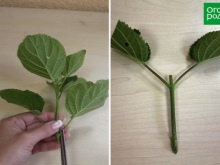
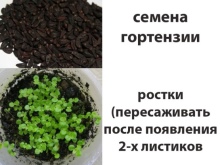
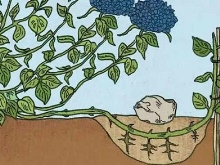
The easiest way to propagate a hydrangea is using a rooted cutting. Cuttings are cut from lignified shoots of the last year; in the summer season, you can take green cuttings. They can be rooted in greenhouse conditions or outdoors. If we are talking about the latter, then the cutting should be covered with a film and create a greenhouse effect, only in this way the plant will be accepted.
If a young plant is planted, then it is not recommended to leave it for the winter for the first year, most likely, it will not survive. It is best to dig it up and move it to a cool room, and then plant it again until it gets stronger.
Young plants most often begin to bloom as early as 2-3 years.
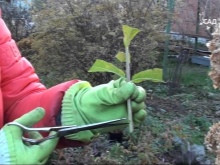
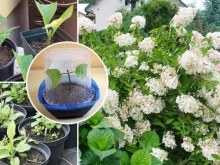
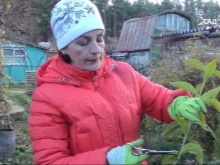
The plant is propagated by layering only at the beginning of spring, before the first buds have blossomed. This method is more painstaking than cuttings. The earth is loosened around the main bush, and small depressions are made (no more than 2 cm), where the lower lateral branches are then pinned, covered with earth. By the end of summer, shoots form on the established layers, after which young plants begin to spud and take care of them. This method is least suitable for Siberian conditions, because young plants should be dug out before the onset of cold weather.
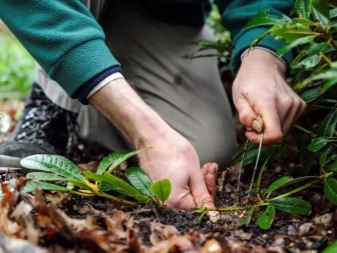

Examples in landscape design
Hydrangea can become the queen of landscape design even in Siberia. With its help, you can arrange a beautiful flower bed, greenhouse or even make a hedge. It goes well with many plants in the garden, for example, with roses, looks very advantageous with conifers, especially with thuja. Many gardeners plant hydrangeas near large trees: birches, acacias or lilacs.



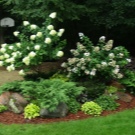
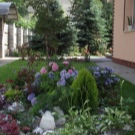
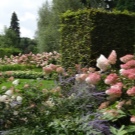
Thanks to a wide range of colors, hydrangeas are of great value for gardeners, because with the help of this plant you can create any colorful mix that will delight you all summer long.
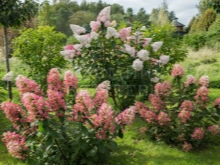
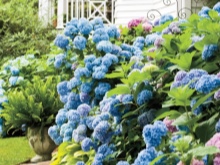
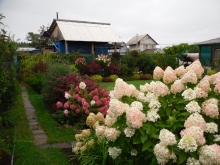
It is not necessary to plant a hydrangea with other plants in the neighborhood, because this plant is so beautiful that it looks amazing on its own, especially if several bushes of different colors are planted.
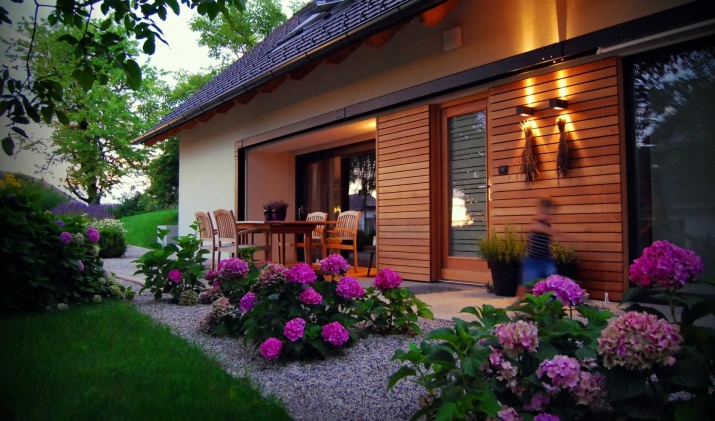
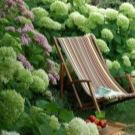




Gardeners leave a lot of positive reviews about winter-hardy varieties of hydrangeas, because with their help you can arrange a real summer paradise even in Siberian conditions. Hydrangeas grow very quickly, they are rarely attacked by pests, but nevertheless, it is better not to exclude preventive measures.
How to care for hydrangea, see the next video.



































































The comment was sent successfully.